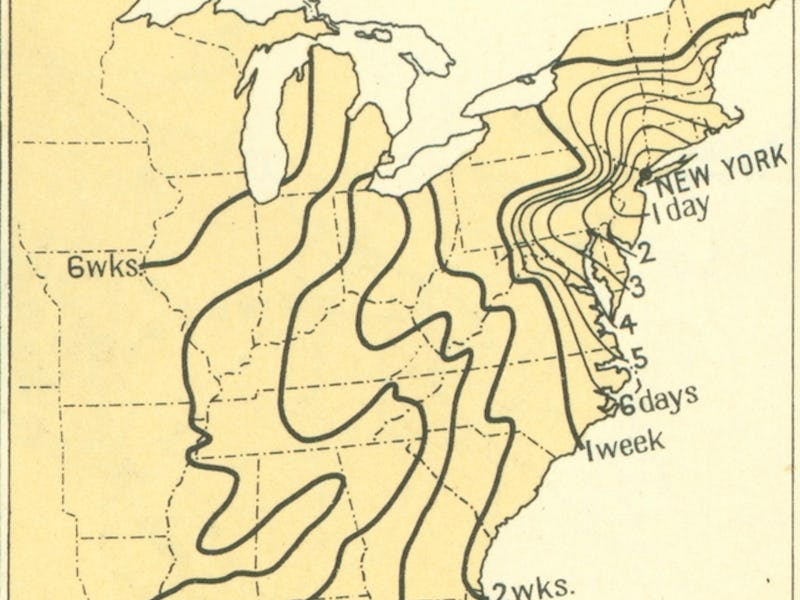We complain that it takes over four hours to travel from New York to Washington, D.C., but it’s easy to forget that modern transportation is pretty damn fast. Over the course of the 19th century, the United States was transformed by the development of its rail network — before then, a trip to D.C. would have taken days.
Infrastructure improvements sound dull, but they have the ability to transform how we think about geography and time. It’s possible for a New Yorker to take a (very, very short) weekend trip to California, but in the year 1800, you would have needed to take the entire summer just to visit someone in Chicago. And if you made a friend on that vacation and then left, you probably wouldn’t ever see them again.
Look at this map below, taken from the Atlas of the Historical Geography of the United States published in 1932, which shows how long it would take someone in 1800 to travel across the country, using New York as a starting point:
It seems unfathomable these days, but the above situation didn’t last for long. By 1830, infrastructure was on the move. The first commercial railroad was built in Massachusetts in 1826, which led to the gradual development of further tracks based on British steam locomotive technology. At the same time, roads were rebuilt, extended and improved, which led to more vehicles. By now, you could probably visit your friend in Chicago in around six weeks. Here’s the same map in 1830:
In the ensuing period, rail went full steam ahead. By 1840, around 3,000 miles of railroad track had been built, and the earlier noisy trains improved and were made faster. Your friend in Chicago? You could visit them during a long weekend. By 1857, New Yorkers could travel to other northeastern cities in a matter of hours:
The improved infrastructure led to a dramatic change in American industry. Goods could now ship far further than ever before. The end of the First World War led to an increased construction workforce, as military men sought to use their skills for other projects. In 1830, three days travel would take you as far as North Carolina, but by 1930, you could reach the Californian coast:
These days? You can fly from New York City to Los Angeles in around six hours. Way back in 1800 you probably wouldn’t have made it out of New Jersey by that point. Your friend in Chicago is now just a two-and-a-half-hour flight away, and the rest of the world is open for us to explore.
